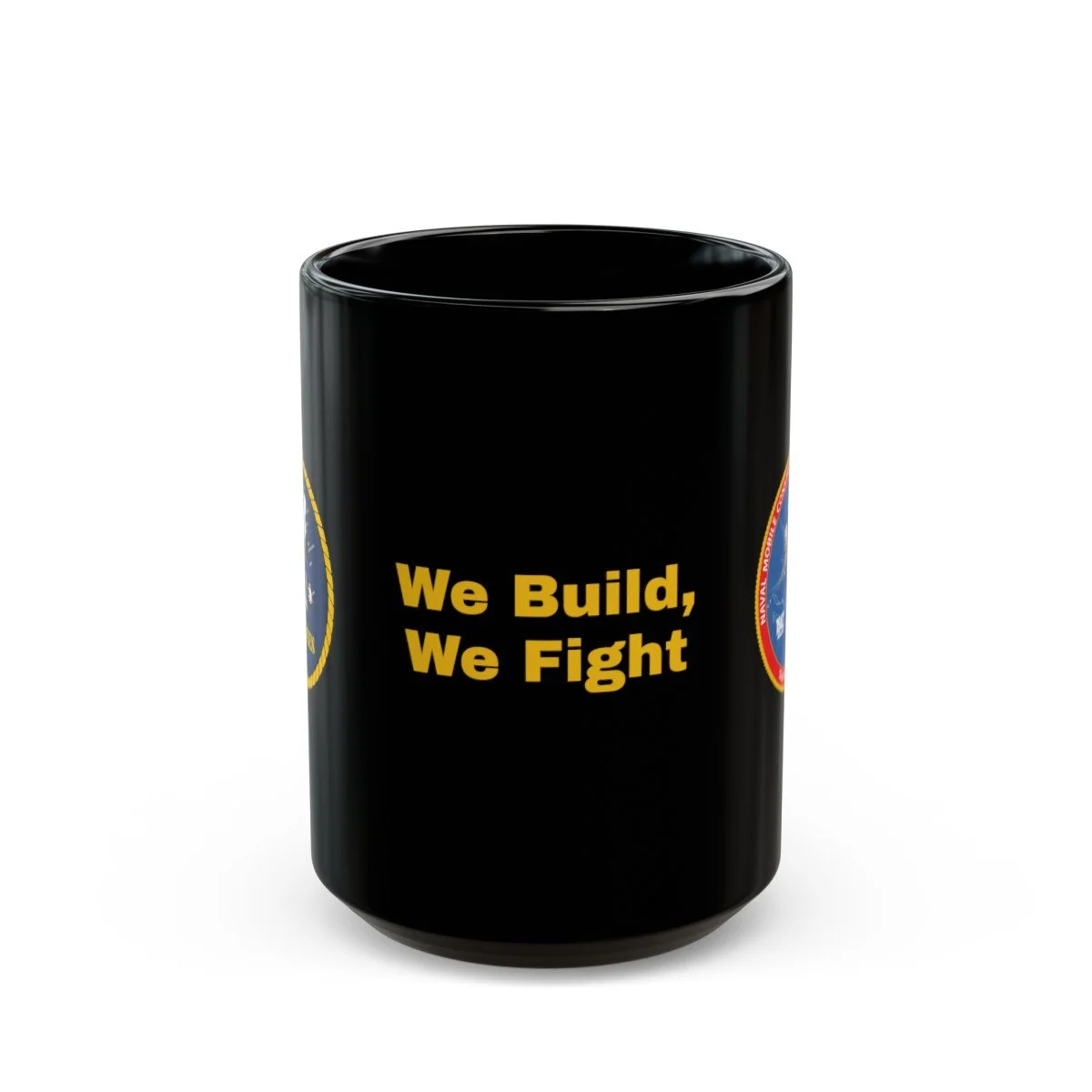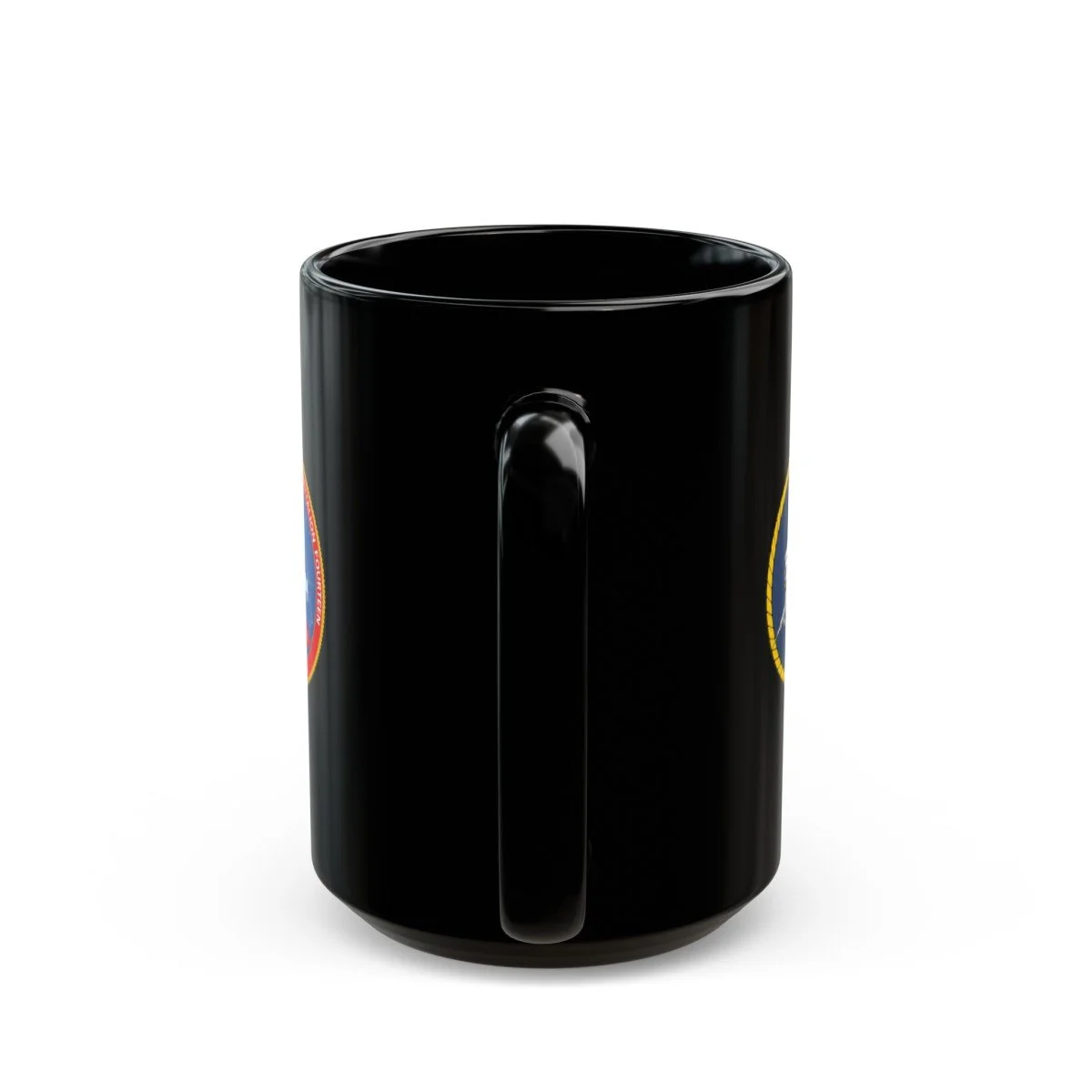 Image 1 of 4
Image 1 of 4

 Image 2 of 4
Image 2 of 4

 Image 3 of 4
Image 3 of 4

 Image 4 of 4
Image 4 of 4





Naval Mobile Construction Battalion Fourteen (NMCB - 14) / Seabee Emblem / "We Fight, We Build" 15 oz Black Ceramic Coffee Mug
Sip your coffee proudly from your NMCB-14 Seabee 15 oz Mug. It’s BPA and lead-free, microwave and dishwasher-safe, and made of black durable ceramic. .
Material: 100% ceramic with a glossy finish .
15oz .: C-shaped easy-grip handle .
Microwave and dishwasher safe .
Lead and BPA-free
NMCB-14 History
Naval Construction Battalion (NCB) 14 was commissioned on July 14, 1942, at Camp Allen, Norfolk, Virginia, to support WWII efforts, with CDR T. F. Reilly, Jr. as its first commanding officer and a total personnel count of 991. The battalion's initial deployment took them to Noumea, New Caledonia, and then to Aola Bay, Guadalcanal, for construction and airfield tasks, despite enemy attacks. Their notable achievements include constructing the "Mahogany Bridge" and a 6-24 runway, among other projects completed by June 15, 1943. After reassignment in July 1943, they built the Metaponia Bridge before leaving Guadalcanal in November 1943, and eventually returning to the US in December. The 14th NCB's second deployment in October 1944 led them to Pearl Harbor and subsequently to Saipan and Okinawa in 1945, where they continued their "build and fight" mission. The battalion was deactivated on April 12, 1946, but was re-commissioned on July 1, 1961, as the "Pride of Dixie," with readiness support based in Jacksonville, FL. Re-designated as NMCB 14 in July 1991, the battalion undertook various training and construction projects, including overseas deployments. In March 2004, NMCB 14 was activated for Operation Iraqi Freedom II, deploying 397 members to Al Anbar Province, Iraq, where they conducted numerous construction projects and initiated the Iraqi Construction Apprentice Program. The battalion suffered casualties, losing seven members to combat actions in 2004. These losses were solemnly commemorated in a memorial ceremony. The narrative of NMCB 14 encapsulates a legacy of service, construction expertise, and sacrifice from WWII through to the Iraq War, marking a significant contribution to U.S. military efforts and the Seabee tradition of "We Build, We Fight."
Sip your coffee proudly from your NMCB-14 Seabee 15 oz Mug. It’s BPA and lead-free, microwave and dishwasher-safe, and made of black durable ceramic. .
Material: 100% ceramic with a glossy finish .
15oz .: C-shaped easy-grip handle .
Microwave and dishwasher safe .
Lead and BPA-free
NMCB-14 History
Naval Construction Battalion (NCB) 14 was commissioned on July 14, 1942, at Camp Allen, Norfolk, Virginia, to support WWII efforts, with CDR T. F. Reilly, Jr. as its first commanding officer and a total personnel count of 991. The battalion's initial deployment took them to Noumea, New Caledonia, and then to Aola Bay, Guadalcanal, for construction and airfield tasks, despite enemy attacks. Their notable achievements include constructing the "Mahogany Bridge" and a 6-24 runway, among other projects completed by June 15, 1943. After reassignment in July 1943, they built the Metaponia Bridge before leaving Guadalcanal in November 1943, and eventually returning to the US in December. The 14th NCB's second deployment in October 1944 led them to Pearl Harbor and subsequently to Saipan and Okinawa in 1945, where they continued their "build and fight" mission. The battalion was deactivated on April 12, 1946, but was re-commissioned on July 1, 1961, as the "Pride of Dixie," with readiness support based in Jacksonville, FL. Re-designated as NMCB 14 in July 1991, the battalion undertook various training and construction projects, including overseas deployments. In March 2004, NMCB 14 was activated for Operation Iraqi Freedom II, deploying 397 members to Al Anbar Province, Iraq, where they conducted numerous construction projects and initiated the Iraqi Construction Apprentice Program. The battalion suffered casualties, losing seven members to combat actions in 2004. These losses were solemnly commemorated in a memorial ceremony. The narrative of NMCB 14 encapsulates a legacy of service, construction expertise, and sacrifice from WWII through to the Iraq War, marking a significant contribution to U.S. military efforts and the Seabee tradition of "We Build, We Fight."
